Designing Eco-Games: Lessons from 10 Years of Development
January 9, 2025 / by Nico King, Executive Creative Director, Chaos Theory Games
So you want to develop eco-games?
Hi, Nico here, co-founder of Chaos Theory Games! We’ve been creating eco-games for over a decade, with our games (such as Crab God) earning social impact awards from Gamescom LATAM, the AGDAs, and the Unity Awards. We’ve developed games for the UN World Food Programme and collaborated with Greenpeace and WWF. With recent support from a grant to help promote impact game development, we wanted to share some of our eco-game design insights with the G4C community!
In the next 15 minutes, we’ll dive into our eco-game design and development process. My goal is to inspire fellow designers and industry professionals to create impactful eco-games by sharing what we have learned, which blends core game design principles with insights from environmental experts. We’ll discuss frameworks for building compelling games and look at examples that bring these concepts to life – hopefully inspiring your next project and increasing the positive impact we can make as an industry!
So, let’s get started.
Why Eco-Games Matter
Games hugely impacted my life, and I have always known that they could be used to contribute to causes I care deeply about. Whether you’re addressing climate change, wildlife conservation, or promoting sustainable practices, creating eco-games is a meaningful way for our community to contribute to some of the most pressing issues of our time. So before jumping into the rest of this blog, let’s establish the reason eco-games are valuable:
It’s an Important Issue
It’s no secret that climate change and environmental sustainability are among the most pressing issues of our time. As scientists have emphasised, there is no single solution to the climate crisis. Instead, numerous small, interconnected actions are required to drive large-scale impact. Games are a powerful medium for storytelling and engagement that can influence players’ perspectives and behaviours toward these issues.
Eco-games matter because they bring these complex, often overwhelming topics into a space where people can interact with them. They meet players where they are, turning abstract ideas into practical experiences.

Scalability and Engagement
Games have a unique capacity for large-scale distribution while delivering a personalised experience, making them a great medium for familiarising audiences with environmental concepts, contributing to direct action causes, or promoting behaviour change. Players can develop a deeper understanding and appreciation for environmental issues, increasing the likelihood of future action.
Exposure to Eco Themes
One of the most impactful things we can do as game developers is to include sustainability-focused technology or concepts in all our games. Studies of various forms of media have shown that exposure to positive ecological messaging leads to an increased chance of adopting eco-friendly behaviours. Even if you’re not strictly developing an “eco-game”, embedding ecological themes into popular games can have a sizeable positive impact.
Direct Action
Games donating revenue to environmental causes has become a growing trend as developers and players seek to contribute more meaningfully to sustainability. As developers, we understand that donating profits in a crowded market can serve a dual purpose: standing out from the competition while achieving our goal of making the world a better place.
In our most recent title, Crab God, we implemented eco features that let players vote on what conservation causes a portion of the game’s revenue would go towards, making a tangible connection between gameplay and direct environmental action. This feature was positively reviewed by players and the press alike, boosting awareness of the game and helping us achieve our impact goals.
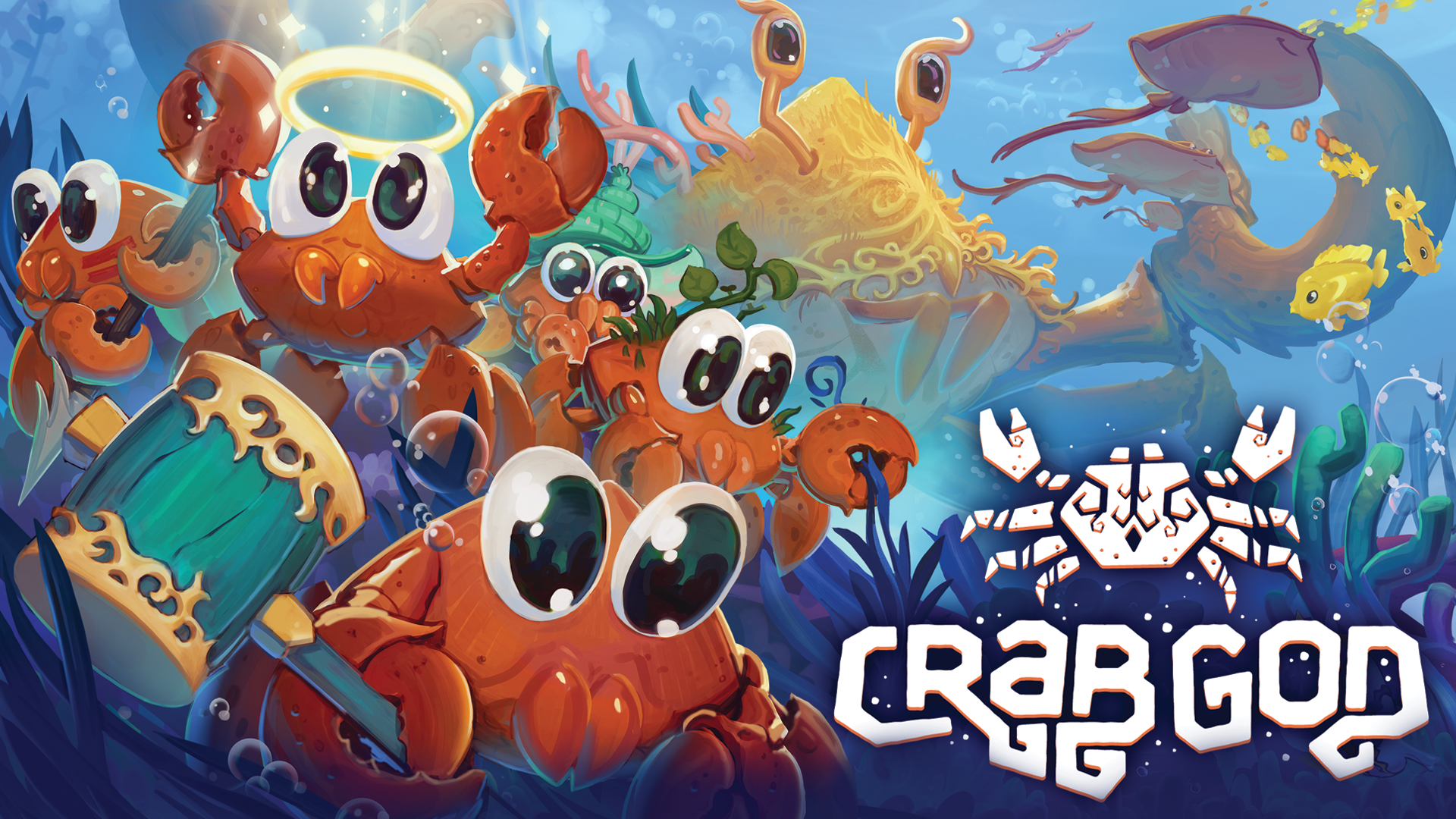
Guide to Eco-Game Development
Now that we’ve covered some of the strengths of eco-games, I want to highlight what I believe is the most important question, “What is your game, and who is it for?” It might seem obvious, but many developers get caught up in the excitement of creating an impactful eco-game (including myself on some of our early games). Defining your game’s core identity, target audience, and path to market are crucial before anything else, as it will determine the specific tasks you need to do to be successful:
- If your game is a premium entertainment product sold on platforms like Steam, you compete for attention with the most popular games, like Fortnite, Roblox, and Minecraft. Your eco-game won’t succeed on its theme alone – you need a compelling hook, clear and compelling marketing messaging, and a polished product at the bare minimum.
- Is it a free-to-play mobile game? You’ll need deep knowledge of mobile game design and monetisation strategies. Free-to-play games come with their own set of challenges, especially when balancing revenue generation with meaningful eco-impact. Are you confident in your user acquisition strategy? Can you generate enough revenue per player to fund your development, marketing, and eco-goals?
- If you’re developing an educational game to be distributed in schools you must understand how to target curricula across different regions (and countries). Do you have evidence that your game can meet specific educational outcomes? Do you have existing partnerships with educators or government departments who will ensure your game is adopted in classrooms? These challenges are entirely different from entertainment-first games and typically require a deep understanding of the education industry.
In summary, developing an eco-game adds another layer of complexity to an already challenging process. While these games are valuable, an environmental theme isn’t enough to guarantee success (and can often make the process more difficult). Your game must still compete in gameplay quality, market strategy, or educational outcomes with all other products already on the market. With that being said, an eco-focus can be a differentiating factor that sets your game apart in an increasingly crowded marketplace (when executed well).
So, where do we start? As always, with goal setting!

Starting with a Clear Vision
The foundation of any impactful game begins with a clear vision. Your vision acts as your guiding star, helping align the project team, and importantly, identifying all of the ideas and suggestions you should say “no” to. Whether designing for entertainment, focusing on maximising impact, or striving for both, establishing a clear list of priorities and measurable outcomes will help avoid distractions.
I’ve found the best approach to be establishing a single vision statement, 3 game design pillars, and 2-3 target outcomes. The vision statement captures what you’re creating and why – first to align your team and later as the foundation of your marketing messaging. The game design pillars define the experience you’re building, guiding the development team’s decisions. Finally, the target outcomes clarify what success looks like, covering areas like commercial success, critical reception, and environmental impact. Limiting your outcomes to 2-3 avoids competing goals and forces you to make decisions about what is most important for this game.
There are three ways a clear vision helps:
- Alignment: It helps to align the vision within the team and amongst your stakeholders regarding essential design decisions. If the vision and desired outcomes are clear, vetoing ideas that don’t support the goal is far easier. Specific goals help everyone on your team contribute practical ideas, not just ‘cool ideas’.
- Direction: While other parts of the project may change, the vision statement and target outcomes act as a guiding light, moving the project towards the desired goals.
- Inspiration: Provides an insightful or meaningful outlook on why the work matters to help your team persevere during potential development struggles or setbacks.

Tools for Designing Entertainment-First Games
Whether you are developing a AAA game or the next indie darling, the fundamentals of good product design will always take priority over impact features. Entertainment comes first, and success in this arena will ultimately drive downloads, resulting in the impact you seek to achieve. Your environmental messaging will resonate more effectively if the game is fun and immersive, so don’t lose sight of core game design principles:
- Target Audience and Personas: Define specifically who your game is for, study their preferences, and priotise feedback from these players. Detailed personas and good testing processes will ensure that you deliver a game that resonates strongly with a specific group, increasing the chances of success.
- Game Design Pillars: Establish the core elements that define the experience you want to build. These pillars help maintain a cohesive vision of the player experience throughout development.
- Unique Selling Points (USPs): Identify distinctive features to capture players’ and media’s attention. USPs can include unique gameplay mechanics within your genre, novel creative concepts, and innovative use of technology.
- Key Innovation Targets: Focus your innovation on specific areas that align with your goals, and avoid overhauling aspects of the game that fall outside these priorities. Directing innovation toward features that players care about helps reduce complexity and avoid wasted effort.
These design tools are valuable for aligning your team and guiding decision-making. While there are many options, the key is to choose a few that can be consistently followed throughout the course of development. Don’t let the variety overwhelm you – focus on integrating the tools that best fit your workflow and revisit them regularly to keep your team on track.
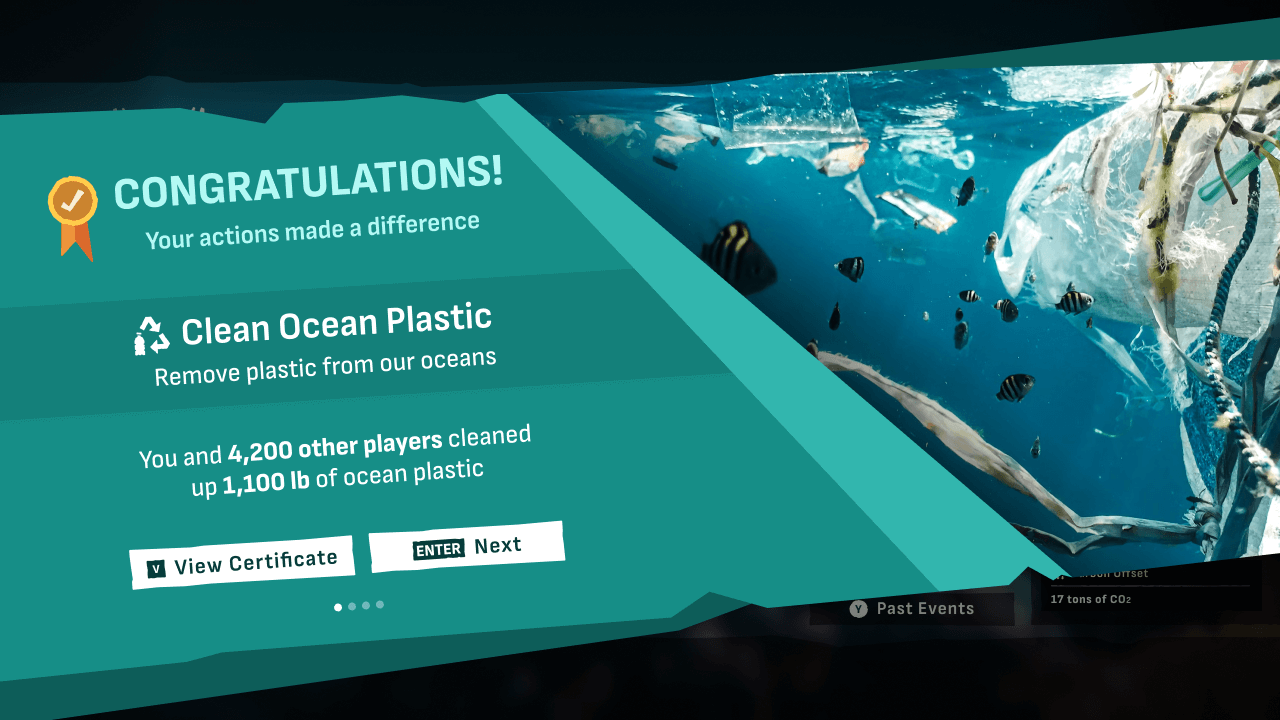
Tools for Designing Impact Games
Regardless of your approach, whether it’s entertainment-first or a more serious, impact-focused game, we can always benefit from a structured approach to setting and measuring impact goals. Some of the tools and frameworks that we have found useful on our projects:
- Use the SDGs for Inspiration: The United Nations Sustainable Development Goals (SDGs) provide clear, actionable targets to inspire your game design and help set measurable objectives. Within ‘Climate Action’, ‘Life on Land’, and ‘Life Below Water’, the SDGs offer a wide range of specific goals to work towards.
- Transformational Framework: The transformational framework helps structure games to achieve real-world change. This tool helps balance entertaining gameplay and driving meaningful social or environmental impact. I have expanded on this further down.
- Theory of Change: A framework for breaking down complex, long-term goals into smaller measurable components. This approach helps reduce iteration time when focused on long-term goals such as behaviour change.
- Collaborating with Experts: Working with environmental conservation specialists is a great way to help ensure your team is focused on solving the right problems and that your goals are realistic. Here are some suggestions for how to connect with specialists:
- Partner with Universities
Reach out to professors or students who have expertise in environmental sciences. From our experience, academics are often excited to lend their expertise and contribute towards practical work in their field. - Leverage Environmental NGOs
Connect with NGOs like WWF or Conservation International who share goals with your project. These relationships can be mutually beneficial as they lend expertise to a project that is raising awareness or supporting in-game donations. - Attend Conferences
There is a wealth of experts at environmental conferences like COP or EarthX, and most cities will have various meetups for likeminded individuals. - Collaborate through Industry Networks
Communities such as Games for Change, Unity for Humanity, or IGDA are filled with other game developers with experience in this space.
- Partner with Universities
I’ve found that breaking down our objectives into distinct tracks – entertainment and environmental impact – keeps our game engaging and meaningful. This dual approach ensures we’re designing something people want to play while still making a difference. After all, a game that isn’t engaging won’t drive the impact we aim for.
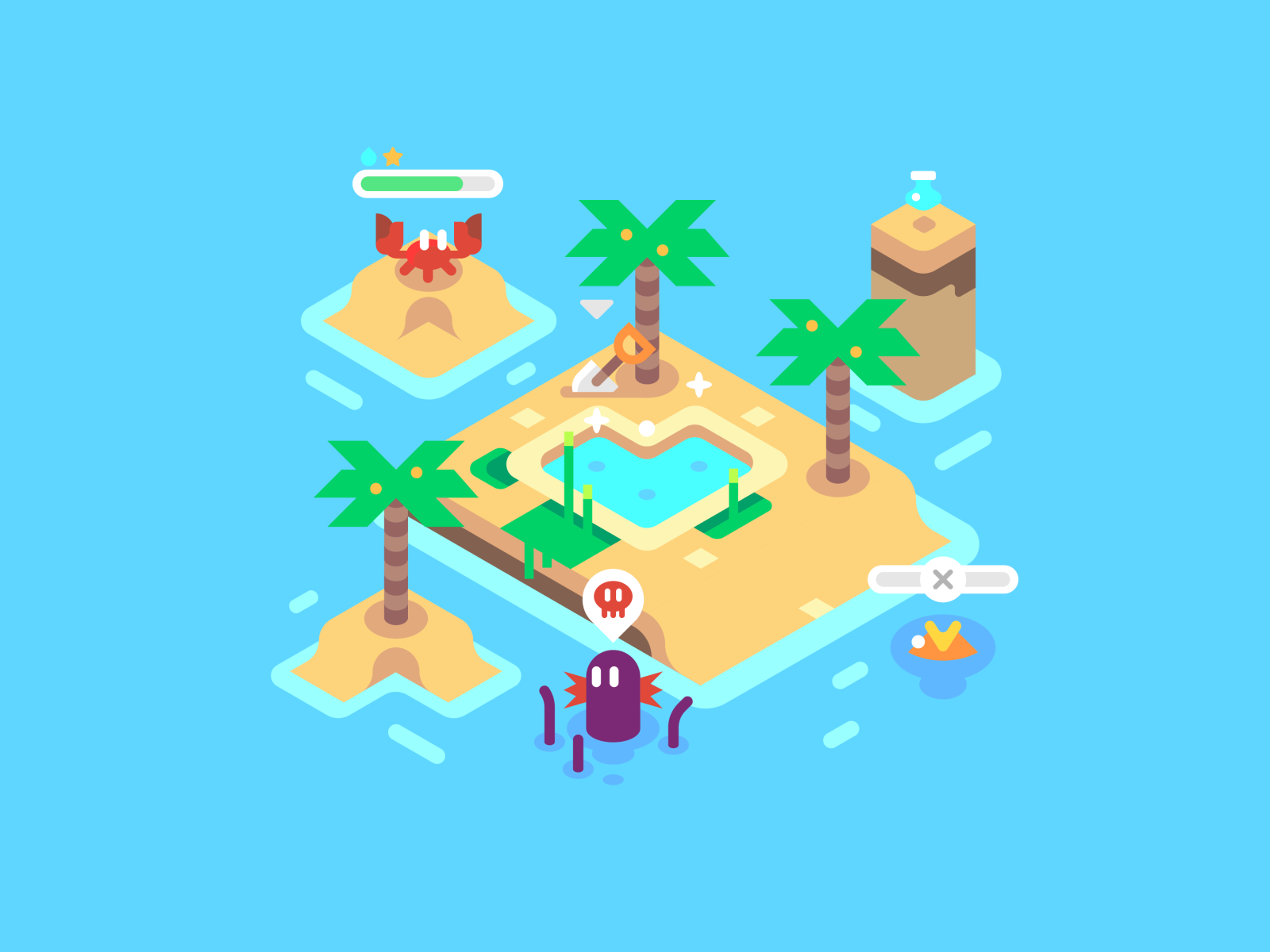
Designing Eco Games as Entertainment Products
You may already know that establishing game design pillars and setting specific impact-focused objectives are essential in developing eco-games. But the buck does not stop there! You need to develop a marketable product with great retention if you want to achieve breakout success. Games typically fall into two categories – they sell millions or struggle to gain traction, with little middle ground. Creating an engaging product that can hold its own in a crowded marketplace is a challenging task that requires focus.
Here are some tips you can follow:
Creating a Captivating Hook
A solid hook is crucial for drawing players into the game – This is one sentence you can your target audience that will get them to say “tell me more”. This could be an intriguing narrative, unique gameplay mechanics, or visually stunning environments (such as vibrant coral reefs!). Some tips that I recommend when creating and refining your hooks:
- Start with a genre or theme you are an expert in (or study until you become an expert!)
- You are defining your game’s unique selling points within the genre – focus on novel ideas that work within established conventions and complement common mechanics (such as an underwater colony sim game about Crabs worshipping a Crab deity, and building coral reefs to collect resources).
- Your hook needs to stop your target players in their tracks. This could mean being bold, visually stunning, or even controversial – sparking curiosity and discussion. The hook should jump out at players within the first two sentences and get them asking questions, if it doesn’t, keep refining and practicing the pitch.
- A great hook can be communicated almost instantly, be that visually (ideal), or within the first two sentences. We all have short attention spans, and the goal of the hook is to build enough intrigue in your audience to get them to dive deeper. We can rely on preexisting knowledge, assumptions, and expectations within the genre to quickly communicate (or subvert) complex ideas – Another reason that a clearly defined target audience is essential to developing a successful game.
- A good hook leaves people wanting to learn more. It should tease enough information to excite players while encouraging them to keep searching.
- Don’t stop with 1 hook – It’s important that the initial hook sparks curiosity, but you want to follow that up with 5-10 other reasons players want to download your game – gradually reeling them in as they discover all the reasons this game is interesting, exciting, and novel.
Having multiple hooks makes your marketing strategy more effective – giving you talking points that target different stages of the marketing funnel. For instance, in Crab God, the initial hook was the quirky concept of a “colony sim where you build a crab religion,” grabbing attention with novelty and an element of absurdism, while later hooks focus on the game’s eco-features that let players vote on environmental conservation causes to contribute to.
By layering hooks strategically, you can capture interest early, sustain excitement, and gradually introduce your game’s broader message, ensuring it resonates on multiple levels. If you need more clarity on creating a compelling hook, here are some resources I recommend: The Design Lab and Nerd Lab.
Building a Compelling Core Gameplay Loop
Once players have downloaded the game we want them to stay engaged and keep coming back for more. A compelling core gameplay loop sits at the heart of why players want to continue playing. We like to focus on the Action, Reward, Expansion (ARE) model at Chaos Theory. Players first take an action – whether constructing a building or killing an enemy. Each action is followed by a reward, such as coins, XP, or narrative progress, giving players a sense of achievement and encouraging them to continue. Finally, rewards lead to the expansion of the player’s ability to do the action, increasing their power to influence the world and building a sense of progression.
To further increase retention, we can layer multiple short-term, medium-term, and long-term ARE loops on top of one another so the player is always progressing. This approach fosters “sticky” gameplay that encourages repeat engagement, boosts player retention, and increases the likelihood of a successful game release.
Additionally, replayability is linked to success, so incorporating evolving content and varied progression paths will keep players returning, strengthening game impact and retention.
Effective Marketing Strategies for Eco-Games
An effective marketing strategy is crucial for reaching a broad audience and ensuring your eco-game achieves its intended impact. While creating a fun and meaningful game can be exciting, it’s easy to overlook the necessity of marketing. Building on the earlier steps, crafting compelling hooks and identifying your unique selling points, we now need to create a plan that details how and where we communicate these ideas to our audience.
A strong marketing plan starts with understanding where to reach your audience. Create a list of all the platforms and channels that your audience is using to discover other games in your niche. Highlight any channels where you have expertise or unique strengths and focus your efforts there. It’s better to focus on a few channels that you can stand out in rather than spreading yourself too thin.
A rule of thumb that we have found useful is that 30% of the overall budget (or time) should go towards marketing and promotion. This depends on your specific game, but the point is that it should be a considerable focus for any game project. You can get a more comprehensive insight into marketing strategies in our free eBook, Create Games That Solve Problems.
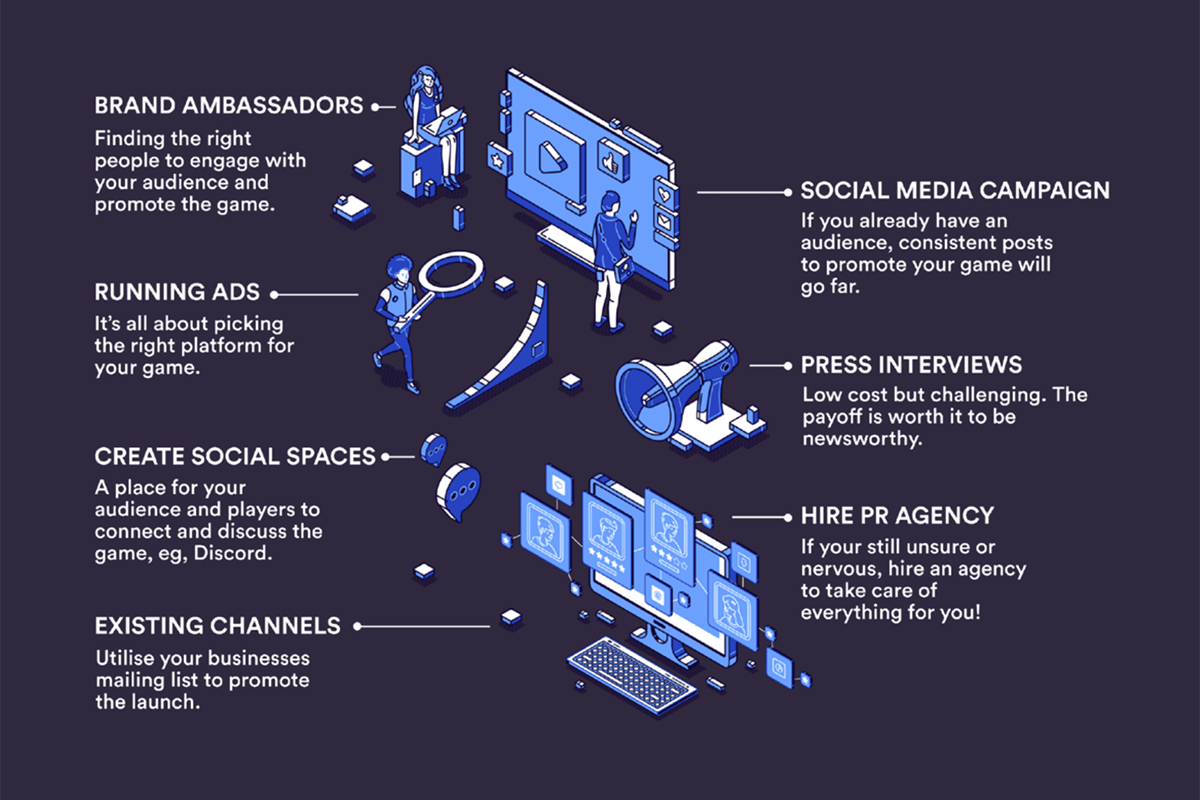
Designing eco-games as entertainment products can be both creatively fulfilling and strategically challenging. While achieving meaningful environmental improvement is at the heart of the project, the game’s entertainment value ultimately drives its success. A compelling hook, an engaging core gameplay loop, and a focused marketing strategy are all vital components to ensure your game’s success.
Practical Methods for Increasing Impact
Alright, you’ve built an awesome eco-game with great potential to make a difference, so let’s make sure it meets that potential. This section outlines how to further push that impact by testing, learning, and refining based on data and insights. We will discuss how tracking specific data and listening to player feedback can guide improvements, helping you create a game that genuinely resonates and inspires action. Eco-games are about more than just play; they’re about changing perspectives, encouraging real-world actions, and making a lasting impact. So, let’s get into it.
Forming Your Hypotheses
Setting, testing, and refining hypotheses is the simplest method for ensuring that your game achieves its impact goals. At a high level, it’s simple, but the hectic nature of game development often introduces distractions that can get in the way. It’s important to regularly review your assumptions about the design decisions you are making, and ask targeted questions to inform your actions.
Start by defining what you believe is going to happen, such as players completing narrative chapter 1 and then changing their weekly shopping habits to preference local produce. Be precise and measurable, stating the expected cause and effect, and then test this as soon as possible. Did you achieve the desired outcome? Did your assumptions hold true? Do we need to improve this system or feature and test again?
Regularly following this method ensures that you are testing assumptions and reduces subjective bias in the development process.
Testing and Iteration
With your hypotheses established, it’s time to implement your testing strategy. Here are some techniques to help gather valuable insights:
- Playtesting: Utilise platforms like PlaytestCloud for remote testing with your target audience, or conduct in-person focus groups to observe player interactions. Playtesting your game every 1-2 weeks and asking targeted questions is the best way to rapidly improve and get an accurate picture of your progress. If you’re waiting until it’s “ready” or you feel comfortable showing it off, then you have likely waited too long to test with players.
- Analytics Tools: Incorporating in-game analytics (e.g., Unity Analytics or Google Analytics) to track player behaviour is invaluable when testing with larger groups. Monitoring engagement, progression, and drop-off points can inform you about aspects of the game that may need improvement, and designing analytics to test your hypotheses can be incredibly effective. You could also consider monitoring:
- Energy Usage Estimation: Track your game’s estimated energy consumption based on playtime, hardware used, and player country. This can help you quantify the carbon footprint of gameplay sessions, leading to energy optimisation development decisions, or enabling you to take action to mitigate this outcome.
- Surveys and Feedback Forms: After playtests, gather qualitative feedback using surveys to understand player experiences and preferences more deeply. This qualitative data can reveal the reasons behind player actions.
- Behavioural Change Indicators: Design a plan to measure outputs and outcomes that lead to players’ behaviour change. See Theory of Change for more details on how to set and measure long-term change.
- Monitor Community Engagement: Analyse Discord, game reviews, or social media interactions related to your game. Monitor how many players share their eco-friendly actions inspired by the game or engage with its eco-themed content. This can provide a broader understanding of the game’s reach and influence on environmental awareness.
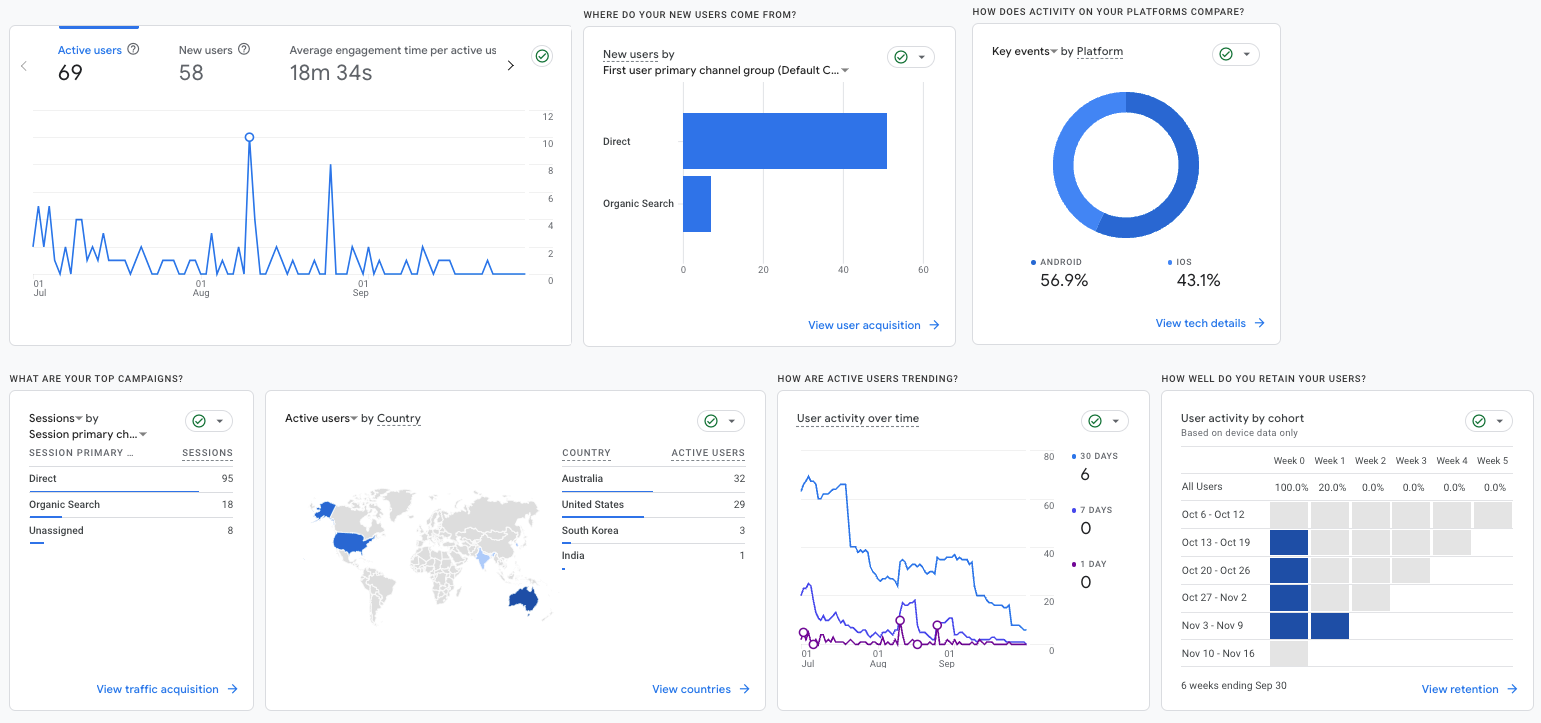
By combining player data, feedback, and clear impact goals, you can take a scientific approach to improve the tangible results your game achieves. With each experiment, you can make it more effective, ensuring your efforts align with both short-term and long-term impact goals. Ultimately, you’re looking to make a real difference in the world, and by measuring that difference, you can determine whether you’ve succeeded.

Using a Transformational Framework in Eco-Game Design
The Transformational Framework, initially coined by Sabrina Culyba, is valuable for developing eco-games that drive real-world change. By identifying components that are key to the success of a game that aims to transform the world around us, this framework helps create games that do more than just entertain. It emphasises practical pre-production processes built around exploratory questions covering eight critical topics and strategies for working with stakeholders and experts.
- High-level Purpose: The big-picture goal.
- Audience & Context: Looking at more than just the traditional target audience demographics and learning as much as possible about the people playing (or facilitating) the game and the environment they will be doing this in.
- Player Transformation: How do you want your players to change?
- Barriers: Anything that may stand in the way of players achieving the transformation outlined in the previous step.
- Domain Concepts: The entire body of knowledge surrounding your game, whether included in the game or not. Identify if this is assumed prior knowledge or intentionally excluded.
- Expert Resources: Any external resources, books, or professionals that may prove helpful in the development process.
- Prior Works: Case studies and live projects with the same High-level Purpose as your game.
Assessment Plan: What is your plan for evaluation? How will you know if you have been successful?
The framework also encourages collaboration across disciplines, helping developers and other stakeholders work together. This framework was useful for our team in identifying key areas to consider when developing an eco-game, and I hope you will gain insight from it too.
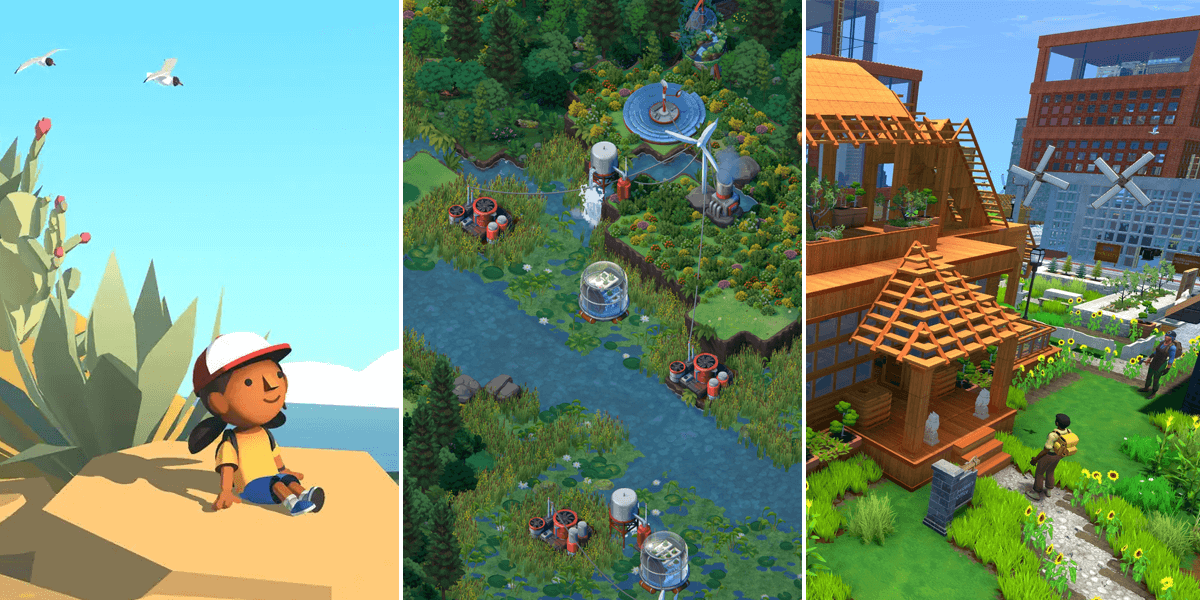
What we can learn from other Eco-Games
Eco-games have come a long way over the past 20 years, with many tackling complex themes and integrating direct-action donation systems. An outstanding group of development studios have created amazing and impactful games, and we would be naive to ignore them. The best way forward is to take lessons from the past.
Notable Eco-Game Examples
- Eco: This multiplayer simulation game challenges players to build a civilisation harmoniously with the environment while balancing development with sustainability. Eco’s deeply integrated environmental mechanics made it successful with its initial educational audience, leading players to collaborate and make tough decisions to prevent ecological disasters. Its success is also tied to the creation of an engaging, community-driven experience, where every action has tangible consequences on the shared environment. Players learn firsthand how complex sustainability decisions can be, and this keeps them returning for more.
- Terra Nil: A reverse city-builder. Terra Nil tasks players with transforming barren, polluted landscapes into lush ecosystems. It succeeds by turning the city-building genre on its head, offering a fresh and novel take on sustainability. The game’s minimalist design and serene aesthetic drew in players who may not usually be interested in eco-themed games, making the environmental message more accessible. Its message of hope and regeneration also stands out in contrast to the usual post-apocalyptic themes, striking a chord with a broader audience.
- Alba: A Wildlife Adventure: Players explore a Mediterranean island while documenting wildlife and saving the environment. The game was praised for its charming art style, positive message, and seamless incorporation of eco-awareness into the gameplay. What sets Alba apart is how it integrates environmental activism into a feel-good, family-friendly experience, making the themes of conservation and wildlife preservation relatable and engaging for players of all ages.
Why These Games Succeeded Where Others Failed
- Targeted Innovation: Games like Eco and Terra Nil succeeded by offering familiar gameplay mechanics that incorporated eco-themes directly into the player experience. These games built their Key Innovation Targets around integrating environmental themes into an established genre, making the games accessible yet novel.
- Engaging Narratives and Positive Messaging: These games made the environmental theme personal and relatable. In Alba, the story of a young girl trying to save her home island conveyed a heartwarming ecological message, focusing on hope and restoration rather than doom-and-gloom scenarios. Ustwo Games enhanced the game’s impact with a pledge to plant a tree for every copy sold or downloaded, aiming to plant a million trees in partnership with Ecologi. This initiative resonated well with players and aligned perfectly with the game’s wildlife conservation and community action themes.
- Good Match Between Theme, Gameplay, and Audience: Eco combines economic simulation systems with eco-components, requiring community collaboration to succeed. It also taps into a relevant cultural backdrop, addressing the looming threat of environmental degradation, making it timely and engaging.
Marketing and Timing: Terra Nil benefitted from solid game development fundamentals, effective marketing, a history of successful titles, and the backing of a major publisher that appreciated its unique gameplay. Similarly, Eco, executed the survival crafting genre well and launched during a boom in the genre, contributing to its sales beyond just the eco theme.
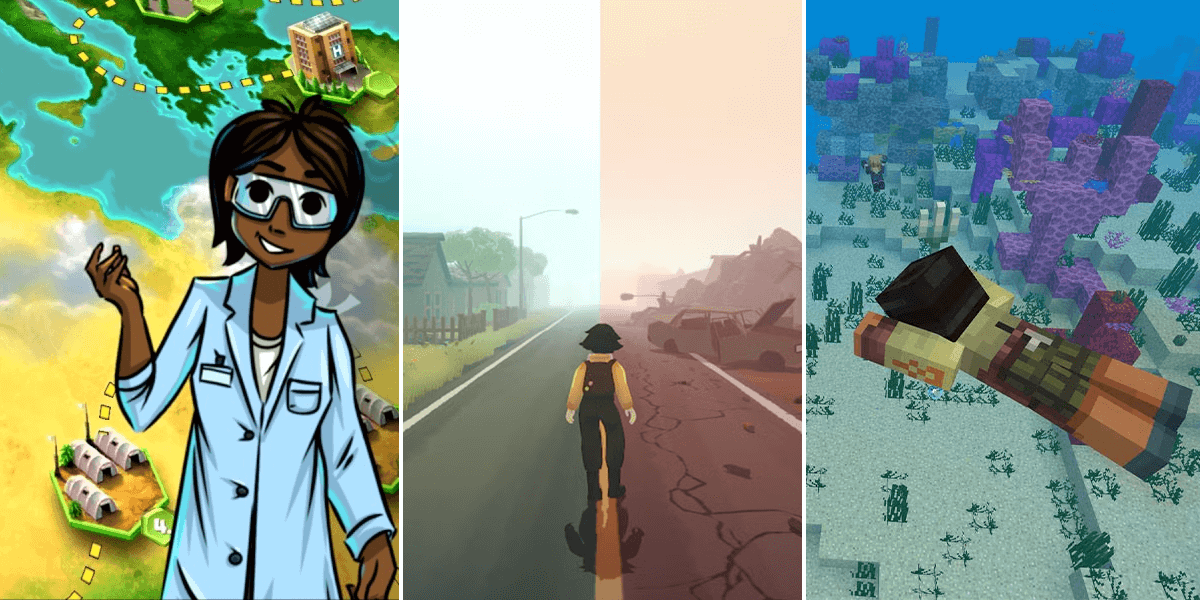
Educational Eco Games
Educational eco-games have the unique potential to make a significant impact by targeting younger audiences or formal educational settings. However, their success often hinges on balancing fun with education and accessibility, a tricky task that requires careful design.
Examples of Successful Educational Eco Games
- World Rescue: This mobile game, developed in partnership with UNESCO, puts players in the shoes of young heroes worldwide. Each hero tackles a global challenge, such as climate change, deforestation, or pollution. The game’s success lies in making global environmental issues personal and relatable for young players. Tying the problems to real-world events engages players emotionally while educating them on sustainability.
- Minecraft: Education Edition (Sustainability City): The education-focused version of Minecraft includes modules on sustainability, offering players the chance to explore eco-friendly cities and renewable energy sources. By leveraging Minecraft‘s massive popularity, the game makes learning about sustainability fun and engaging for students. Its success can be attributed to the seamless integration of eco-education into a game students are already enthusiastic about.
- Plasticity: A thought-provoking game developed by students, Plasticity focuses on a future world plagued by plastic pollution. The game’s educational component is strengthened by its narrative, which explores how small actions can lead to more significant environmental impacts. Its success within educational circles is due to its focus on a real-world issue and compelling gameplay that encourages problem-solving.
Why These Educational Games Succeeded
- Balancing Fun and Learning: Successful educational games like World Rescue and Minecraft: Education Edition strike a balance between entertainment and education. They avoid being overly didactic, focusing on making learning engaging through interactive gameplay and exploration. For instance, Minecraft: Education Edition utilises the beloved Minecraft platform to create immersive lessons, encouraging creativity while imparting knowledge.
- Real-World Relevance: Tying the game’s content to real-world environmental issues helps ground the educational component in reality. Plasticity addresses the urgent plastic waste problem, empowering players to engage in solutions that directly affect their environment. This connection enhances the game’s impact and relevance, making the learning experience more meaningful.
- Integration into Curriculums: Games like Minecraft: Education Edition succeed because they are designed for classroom use. By aligning their content with school curriculums, these games become valuable tools for teachers, increasing their reach and effectiveness in educational settings. Partnerships with educational institutions, such as schools and academic organisations, have further facilitated their distribution and integration into learning environments.
- Partnerships and Distribution: Collaborations with organisations like the International Society for Technology in Education (ISTE) and various educational publishers have helped Minecraft: Education Edition reach a wider audience, making it a staple in many classrooms. Additionally, the game’s availability on platforms like the Microsoft Store has simplified access for educators and students.
Impact Measurement and Media Coverage: Both Plasticity and Minecraft: Education Edition have measured and promoted the impact of their games. The games have received media coverage highlighting their innovative approach to education, contributing to their credibility and popularity. Articles in major publications like Edutopia and Forbes have praised these games’ educational potential, further boosting their visibility and appeal.
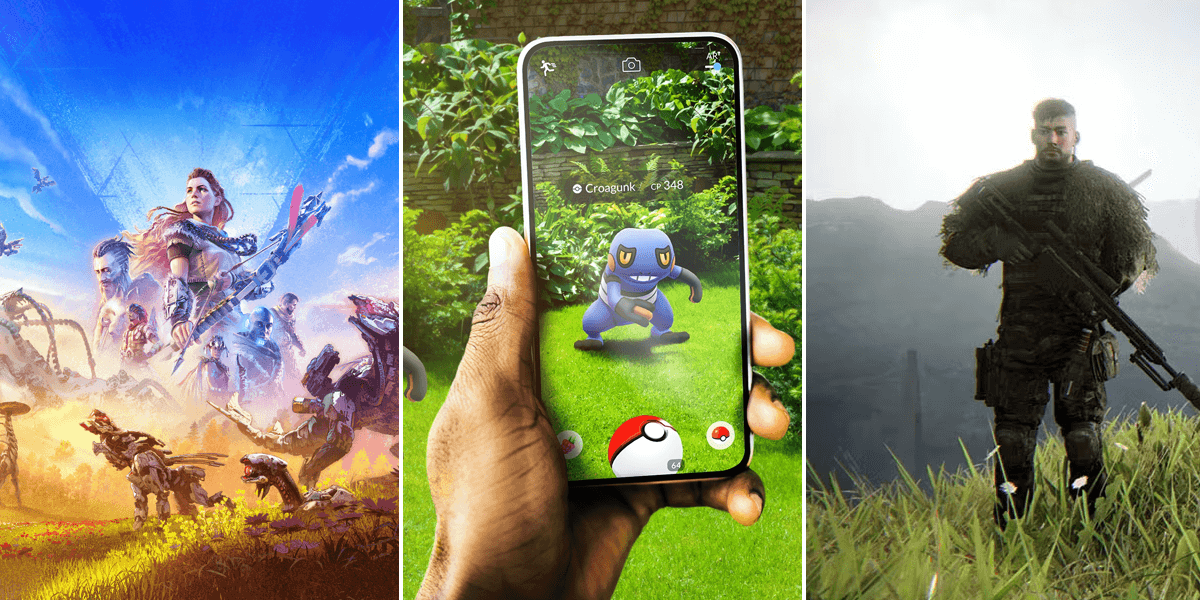
Environmental Themes in Popular Media and AAA Games
The above examples highlight the contributions of games focused on eco-themes, but what about larger studios? If you are working in the AAA space, it could be more challenging to fully establish impact or eco themes as the central gameplay loop, but there are plenty of ways to make it happen!
Incorporating environmental themes into popular media and AAA games can familarise audiences with important concepts and spark conversation about pressing global issues. With their mass appeal and immersive worlds, AAA games can subtly educate players on environmental subjects. Many popular games incorporate environmental themes, raising awareness while engaging players in immersive worlds.
- Horizon Zero Dawn: This action RPG is set in a post-apocalyptic world where humanity must contend with the consequences of environmental and technological collapse. The game’s landscapes are dominated by overgrown ruins and mechanical creatures, highlighting the balance between nature and technology. Beyond its narrative, Guerrilla Games partnered with the Arbor Day Foundation to support reforestation efforts, planting trees to mirror the game’s message.
- Pokémon Go: Though not a traditional eco-game, Pokémon Go has successfully integrated environmental impact into its gameplay. During Earth Day events, Niantic encouraged players to join clean-up efforts worldwide. Community Ambassadors from various locations organized 500 meetups to clean local parks, which amounted to over 3.4 million people participating in the event.
- Ghost Recon: Breakpoint: The game features a vast open world with diverse ecosystems, encouraging players to explore and appreciate the environment while engaging in tactical gameplay. By integrating a tree-planting initiative, Ubisoft enhances the game’s conservation narrative and actively contributes to reforestation efforts. This approach is an excellent example of how game developers can leverage their platforms to make a positive environmental impact.
Conclusion
This has been a high-level review of our process when creating eco-games – the value of a clear vision, crafting compelling hooks, product design, measuring impact, and building effective marketing strategies. – hopefully, a helpful jumping-off point for your projects.
Ultimately, it’s up to you as a developer to mold these ideas into your vision. The challenge is clear: create games that matter, keep them impact-driven, and ensure they connect with and captivate players. By pushing the boundaries of what eco-games can achieve, we can inspire real change and contribute to a brighter, more sustainable future.
Let’s design the future – one game at a time!
